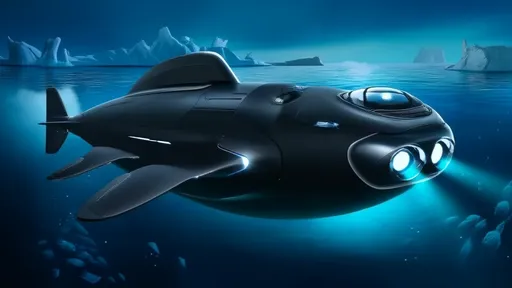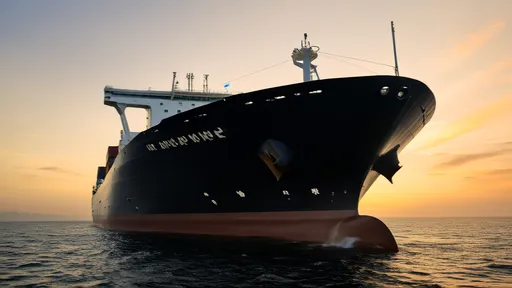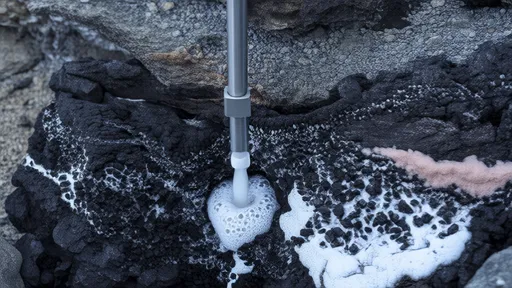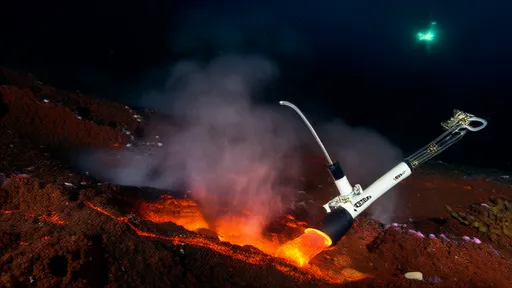The frigid, uncharted depths of Earth's polar regions have long posed
a challenge for scientists and explorers. Traditional underwater
vehicles, while effective in temperate waters, often struggle with the
extreme conditions found beneath Arctic and Antarctic ice. But
inspiration has emerged from an unlikely source: the humble penguin.
Engineers and marine biologists have collaborated to develop the
Penguin Submarine, a revolutionary polar explorer
that mimics the efficient propulsion methods of its avian namesake.
At the heart of this innovation lies the concept of
vortex-ring propulsion. Penguins are masters of this
technique, creating toroidal (doughnut-shaped) vortices with their
flippers to generate thrust. By studying high-speed footage of
penguins swimming, researchers noticed how these birds produce
discrete vortex rings with each stroke, allowing them to move with
remarkable agility and energy efficiency. The Penguin Submarine
replicates this mechanism through a series of precisely timed,
pulsating jets that form controlled vortex rings in the water.
What sets this technology apart from conventional propeller systems is
its exceptional performance in icy conditions. Traditional propellers
often become clogged with ice particles or lose efficiency in
near-freezing waters where viscosity changes dramatically. The
vortex-ring system, however, maintains consistent performance
regardless of temperature fluctuations. Moreover, the absence of
external moving parts makes the design far less susceptible to
mechanical failure in extreme cold - a critical advantage when
operating hundreds of miles from the nearest repair facility.
The submarine's hull design also takes cues from penguin anatomy. Its
teardrop shape minimizes drag while providing optimal hydrodynamic
flow for the vortex propulsion system. Special attention has been paid
to the leading edges, which incorporate a textured surface pattern
inspired by penguin feather microstructure. This biomimetic approach
reduces ice adhesion and prevents the buildup that can compromise
sensor accuracy and maneuverability in polar conditions.
Scientific payload capacity represents another area where the Penguin
Submarine shines. The energy efficiency of vortex-ring propulsion
allows for more power to be allocated to instrumentation rather than
locomotion. Standard configurations include multibeam sonar arrays,
water sampling systems, and high-resolution cameras - all housed in
pressure-resistant pods that maintain functionality at depths
exceeding 1,500 meters. The submarine's unique propulsion method
creates minimal disturbance in the water column, enabling
unprecedented clarity in chemical and biological sampling.
Field tests in Antarctica's Weddell Sea have yielded promising
results. During a recent month-long mission, the Penguin Submarine
successfully mapped previously inaccessible under-ice caverns while
collecting water samples from hydrothermal vent systems. Researchers
were particularly impressed by its ability to maintain position in
strong currents with minimal energy expenditure - a capability
directly borrowed from penguins' hunting strategies. The submarine's
quiet operation also allowed for undisturbed observation of marine
life, opening new possibilities for behavioral studies.
Looking ahead, developers envision an entire fleet of Penguin
Submarines working in concert to explore polar regions. Their modular
design permits customization for specific research goals, from climate
change monitoring to search-and-rescue operations under ice shelves.
Some prototypes are being tested with swarm intelligence algorithms
that mimic penguin colony behavior, enabling coordinated exploration
over vast areas. As Arctic and Antarctic research becomes increasingly
vital for understanding global climate systems, this bionic approach
may well represent the future of polar exploration.
The implications extend beyond scientific research. Commercial
applications are being explored in offshore oil and gas operations,
underwater infrastructure inspection, and even tourism. The
technology's low environmental impact makes it particularly attractive
for sensitive ecosystems. Meanwhile, defense organizations have shown
interest in the stealth characteristics inherent to vortex-ring
propulsion, which generates significantly less acoustic signature than
conventional systems.
As with any cutting-edge technology, challenges remain. Energy storage
limitations currently restrict mission duration, though advances in
battery technology may soon alleviate this constraint. Researchers are
also working to improve the submarine's autonomy, aiming for fully
independent operations lasting several months. Nevertheless, the
Penguin Submarine has already demonstrated that solutions to some of
our most daunting engineering challenges may be found by looking to
nature's own perfected designs.
This remarkable fusion of biology and engineering represents more than
just another tool for ocean exploration. It stands as testament to the
power of biomimicry - the practice of seeking sustainable solutions by
emulating nature's time-tested patterns and strategies. As climate
change accelerates the transformation of polar regions, such
innovative approaches will become increasingly valuable in our quest
to understand and protect these critical ecosystems.

















